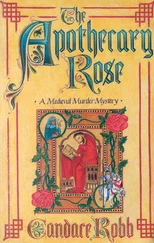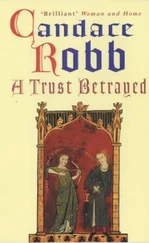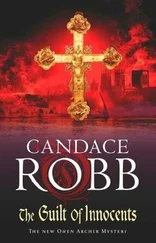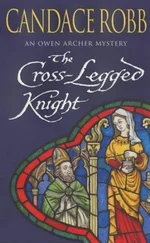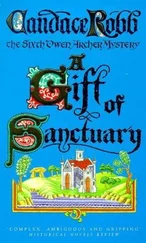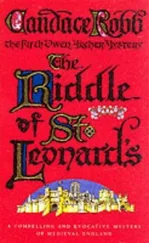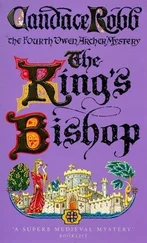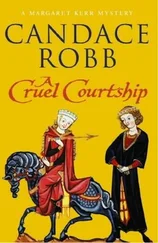By the time this book opens, Wykeham is Keeper of the Privy Seal. Now Edward wishes to make him Bishop of Winchester, a sufficiently high office from which to choose a Lord Chancellor. But Pope Urban V stalled in conferring the bishopric on the King’s favourite. Although it appears that enemies of Wykeham (jealous of King’s favours?) had begun a campaign against him, the issue was not entirely personal. Edward had been in continual conflict with the papacy over what he saw as the popes’ meddling with patronage, which the English kings had always claimed as a temporal, not a spiritual matter, and thus in their jurisdiction. With Urban V the conflict was compounded: the Pope wished to cleanse the Church of pluralism (clergy holding multiple benefices, or ecclesiastical livings) and saw Wykeham as the richest pluralist of the time. Edward had, indeed, generously granted benefices to Wykeham; it was a common, convenient way to pay such a cleric without dipping into the royal purse. Hence the stalemate, and a controversy that divided the English Church into two camps.
In the novel Edward seeks support for Wykeham from the abbots of two major Cistercian abbeys in Yorkshire, Rievaulx and Fountains. While we know that Edward sent at least twenty-five letters to cardinals enlisting their support (actually one to an abbot who was soon to become a cardinal), we have no indication that Abbot Robert Monkton of Fountains and Abbot Richard of Rievaulx were so approached, but it was not a random choice on my part. The Cistercians were not known for blind allegiance to the King of England; their bonds were to their mother house in France. Their support might well have impressed His Holiness.
Another drama is unfolding, this one in Alice Perrers’s life. Alice was an orphan who began her reign at court in Queen Phillippa’s household. She quickly became a favourite of the Queen, and shortly thereafter of the King. As the King’s mistress, Alice’s situation at court was precarious; in fact, her relationship was one of the great scandals of the times, as I mention briefly in the note to The Lady Chapel . If the birth of her son by the King was greeted with hostility among the courtiers, a young woman of nineteen, no matter how self-possessed, might well have sought a protector who would be bound by law to stay by her side. Alice Perrers had no powerful family to protect her when she fell from favour.
Historians do not agree about when it occurred, with theories ranging from 1367 to after King Edward III’s death, but at some point Alice married Sir William of Wyndesore, who held command under Lionel, Duke of Clarence, in Ireland from 1362 to 1366. Wyndesore appears to have been as financially cunning as Alice. He returned from his second tour in Ireland in disgrace for extorting money from the people for his military campaigns. It seems that the money allocated to him for his expedition had been shared with Alice before his departure. This would suggest the early closeness of the relationship that I have chosen. But they made public the marriage only after Parliament denounced Alice following King Edward’s death; the couple argued that Alice had been tried as a single woman when she was in fact married, and thus the property Parliament sought to take from her was Wyndesore’s. Alice stated at this time that the marriage had taken place long ago. She and William lived together occasionally thereafter, but only when it was politically expedient. It appears to have been a cold marriage between two ambitious people; William essentially disinherited Alice’s children after her death and made claim to all her property. I begin in this book to unfold my own version of this marriage.
In reading about Wyndesore (I take this spelling from Burke’s peerage solely to avoid confusion with the castle and town of Windsor), I found it peculiar that a man of whom no one had good things to say rose so quickly upon his return from Ireland with Clarence. In the winter and spring of 1367 the King rewarded Wyndesore with pardon of all debts owed him, granted him a weekly market and yearly fair at Morland (a healthy source of revenue), and made him Joint Warden of the West March towards Scotland. Shortly after the action of this book Wyndesore became Sheriff of Cumberland and Keeper of Carlisle Castle, then returned to Ireland as the King’s Lieutenant for several tours beginning in 1369. A man well rewarded for his soldiering…
Or was he being rewarded for something else? Might the King have discovered the relationship between his mistress and the soldier and seen it as potentially useful if revealed at the proper time? Meanwhile, he paid Wyndesore well for his silence and kept him busy away from court, whilst Alice remained at Edward’s side. Might this not explain the later chill to the marriage? I think it might, though I doubt the relationship was ever warm except between the covers.
I do not condemn Alice for her scheming. In the fourteenth century a woman’s best hope for security was to marry well. And yet even this could be temporary, as in the case of Lucie Wilton’s Aunt Phillippa, a childless widow who discovered she had no role when her husband died. Because of this reversal, Phillippa encouraged the marriage that secured Lucie her position as apothecary. Once Lucie proved her skill and was accepted by the guild, she was remarkably secure. Her marriage to Owen neither improved her standing nor reduced it; only her professional integrity could affect it. Lucie did not seek a protector in marrying Owen; she married him for love. Perversely, she is the one who finds a protector. For all Alice Perrers’s scheming, she wound up with a man who would prove more of an adversary than a partner.
Froissart Chronicles , ed. G. Brereton (London: Penguin Books Ltd, 1978), p. 67.
The History of the King’s Works, Vol. 1, The Middle Ages , ed. H. M. Colvin (London: Her Majesty’s Stationery Office, 1963), p. 877.
The spelling of names was at this time as creative an endeavour as all other spelling. The form of Wykeham’s name that I use is the one I came upon most frequently in twentieth century historical writing.


